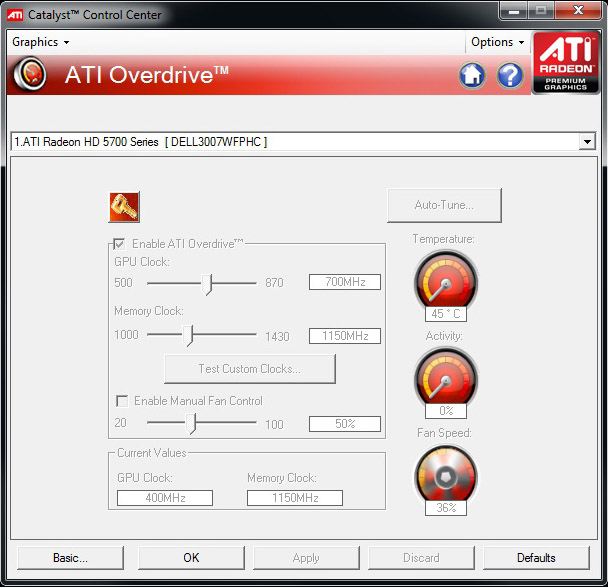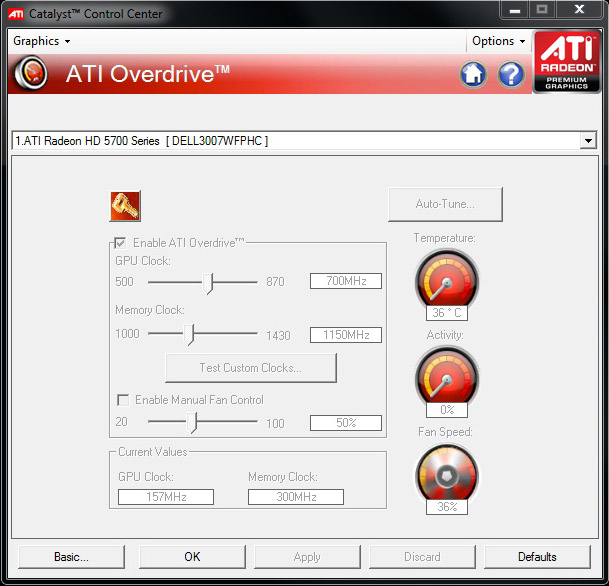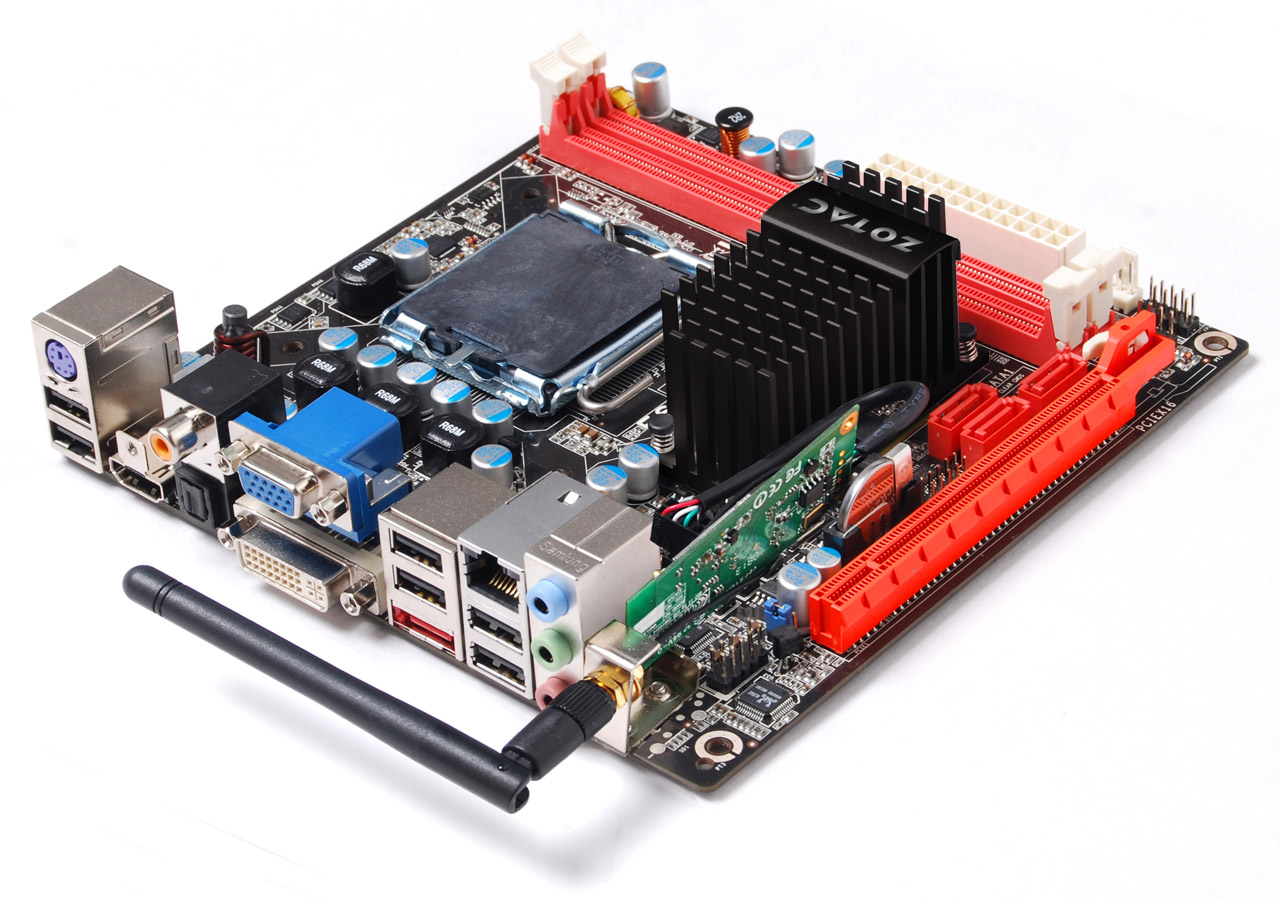CPU Charts, An ATI Update, And Zotac's Mini-ITX Board
Bitstreaming, Eyefinity Power Consumption, And Zotac's Mini-ITX
With that said, I have a couple more ATI-related bits to talk about.
First is the much-anticipated official arrival of Dolby TrueHD/DTS-HD Master Audio bitstreaming support over HDMI in CyberLink’s PowerDVD 9. I had been working with CyberLink to troubleshoot beta support since the Radeon HD 5870 launched more than two months ago. However, access to this functionality was limited to members of the press (and somewhat awkwardly, too—you had to choose HD audio output after starting video playback). Build 2320 officially lets you send the encoded signal to your stereo receiver, where the lossless audio track can be decoded and played back. If you’re lucky enough to own a Radeon HD 5000-series board and use PowerDVD 9, make sure you grab the free update. The only issue we encountered was the software forgetting to leave Aero enabled during Blu-ray playback—a feature the new Radeons are supposed to support.
Second, I got a report from our German office that Radeon HD 5800-series owners (and indeed, owners of Nvidia graphics cards as well) were claiming that running in a multi-monitor configuration caused idle clocks to change, increasing power consumption from the levels reported in my initial reviews.
I tested on a Radeon HD 5850 and a 5750. Sure enough, adding a second monitor to either card caused idle clock rates to jump from 157 MHz core / 300 MHz memory to 400 MHz core / 1,150 MHz memory. Idle system power consumption on the 5750 box increased from 133W to 147W, taking the card’s idle power from a cited 16W up to 30W. Purportedly, this is necessary in order to maintain a stable display output. While that’s still impressively low, you’re still looking at almost two times the power consumption in a multi-monitor configuration. Overall, not horribly impactful, but good to know.
Finally, I noticed that ATI enabled the much-anticipated Drag and Drop transcoding feature via Windows 7 in its latest Catalyst software release. Though this is Very Cool on ATI’s part, I’m at a loss as to actually using the functionality, and Microsoft is eerily quiet on the matter—strange, considering this is supposed to be an early example of DirectCompute making life easier through simplified transcoding. I wasn’t surprised when my iPod Touch shut me down, but was downright amazed when my Zune HD showed no sign of supporting this native Windows 7 capability. Hopefully we’ll hear more on this soon.
Zotac Refreshes A Classic
Just before taking a couple of days off for Thanksgiving, I received a package from Zotac containing its GeForce 9300-ITX WiFi Rev. 2, which is beefed up with three SATA 3 Gb/s ports, one eSATA port, and RAID 0, 1, 0+1, and 5 support. It also includes Wake-on-USB support and a number of expanded voltage options. Finally, the integrated GeForce 9300 GPU is overclocked to match the specs of Nvidia’s GeForce 9400 (580 MHz core, 1,400 MHz shaders).
Get Tom's Hardware's best news and in-depth reviews, straight to your inbox.
Now, bear in mind that I’ve had a few GeForce 9300-based experiences up until this point: Zotac’s own mini-ITX Ion platform rocking an Intel Atom processor and HP’s Mini 311, which I purchased—again—with an Atom. At no point have I ever really found the combination to be suitable on the desktop (even as an HTPC). I’d been meaning to rebuild my initial mini-ITX effort using the first revision of Zotac’s LGA 775-equipped board. But now that there’s a second revision available, keep an eye out for a follow-up with much stronger performance potential paired to a low-power Pentium, Core 2 Duo, or Quad.
Follow us on Twitter for more tech news, reviews, and exclusive updates!
- 1
- 2
Current page: Bitstreaming, Eyefinity Power Consumption, And Zotac's Mini-ITX
Prev Page CPU Charts Update And Radeon HD 5000-Series Pricing-
csuwrx Altough love the idea of low idle consumption of 5800 series, I´ll stick with my HD4870X2, still kick ass in games, don't really need more power right now, I'll wait maybe six or eight more months until I go to 5800 series. apart from that congrats to all who can find a brand new HD5800 :DReply -
tester24 I was really hoping to see Toms have the i7 860 instead of the 870. Honestly who cares about a $500+ CPU!? Most people would get the 750, 860 or 920 because of their lower price points and their capabilities. 870 not that much better to warrant the higher price point.Reply
Sure it's stock speed and turboboost is set higher but it's clock range is the same between the 860 and 870, 660Mhz and 670Mhz respectively.
Now I know a few people will say that if this is true then the performance numbers should be the same but viewing some of the numbers on other sites they are a little different but I would like to see Toms do it because they are a little more thorough. -
one-shot I agree. With a lot of games being developed on console and ported to PC, there isn't too much of a reason to upgrade GPUs. I run 2 GTX 260 C216s in SLI and don't regret adding another two months before the launch of the 58XX series.Reply -
cangelini tester24I was really hoping to see Toms have the i7 860 instead of the 870. Honestly who cares about a $500+ CPU!? Most people would get the 750, 860 or 920 because of their lower price points and their capabilities. 870 not that much better to warrant the higher price point. Sure it's stock speed and turboboost is set higher but it's clock range is the same between the 860 and 870, 660Mhz and 670Mhz respectively.Now I know a few people will say that if this is true then the performance numbers should be the same but viewing some of the numbers on other sites they are a little different but I would like to see Toms do it because they are a little more thorough.Reply
I'll pass your feedback on to the team working on charts.
-
netsql2 I'd love a good Mini-ITX build, how cheap can one make a hulu + 3d gaming box + skype w/ Ubuntu 64, blue tooth, wifi-n (no need for dvd/blue ray, just download).Reply -
netsql2 I'd love a good Mini-ITX build, how cheap can one make a hulu + 3d gaming box + skype w/ Ubuntu 64, blue tooth, wifi-n (no need for dvd/blue ray, just download).Reply -
I'm waiting for the low-profile 5650/5670 to stick into my HTPC for Dolby Digital TrueHD or DTS HD Master Audio.Reply
-
bigght ATI/AMD You have dropped the ball again as far as availability issues with your HD5000 graphics and then to make matters worse, you are jacking up the prices on the cards. But without any competition from Nvidia, you can afford to do this, or can you? Long standing ATI supporters have waited for you to address the demand vs supply issue and "mums the word". Lets hope this ploy does not backfire. I am in need of an upgrade for my present ATI card, but hell if I am going to pay for HD5850 graphics card that increases by $$60 since it was released a few months ago.Reply -
bigght you need to relax, ATI did not jack any of the prices up on their cards. The people who are responsible are the vendors who sell the cards, since the supply is low they jack the price up for the demand. Do not misdirect your anger for the price hike at ATI they did nothing but come out with a very competitive and fantastic card with great features.Reply



